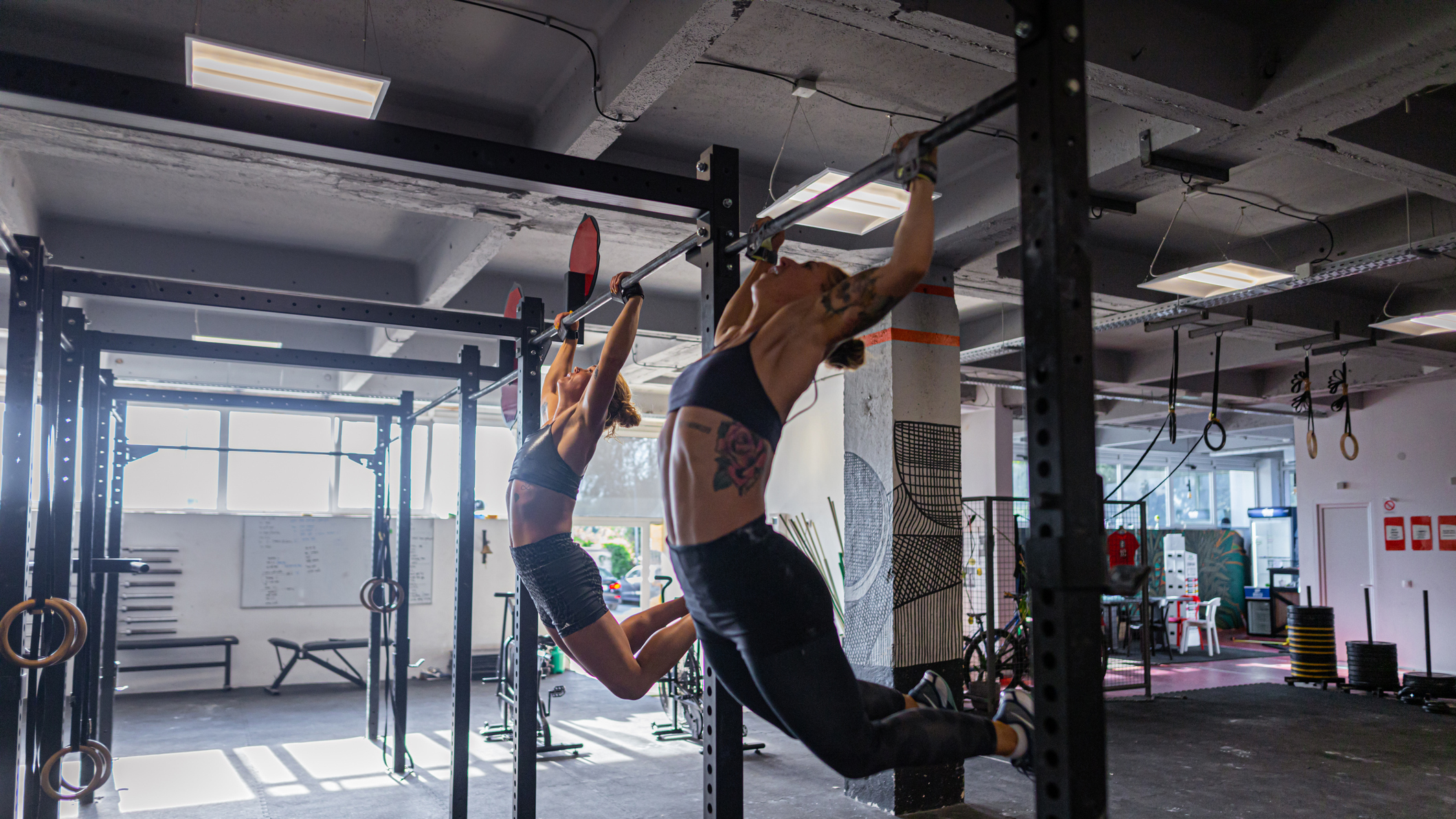The Fran Workout Is CrossFit’s Favorite Test—Use This Elite Athlete’s Tips To Ace It
Want to get a sub-six-minute Fran time? Then use these tips from athlete Victor Hoffer

“What’s your Fran time?” is the CrossFit equivalent of “What do you bench, bro?”
The two-move CrossFit workout is the sport’s best-known benchmark test, and a sub-six-minute time will earn you a nod of approval from seasoned box-goers.
That’s because to achieve that time you need to go to hell and back. The combination of thrusters and pull-ups is like a weekly push/pull/legs split condensed into a few minutes—it will send your heart rate soaring before leaving you flat on your back.
Still want to try it? Thought so. Find out how below, along with some top tips from professional CrossFitter and Represent 247-sponsored athlete Victor Hoffer for achieving your best possible time.
How To Do CrossFit Workout Fran
Perform 21-15-9 reps of:
- Barbell thruster (RX weights 95lb/43kg for men, 65lb/30kg for women)
- Pull-up
Fran is a straightforward workout. Complete alternating sets of barbell thrusters and pull-ups in a descending 21-15-9 rep scheme: 21 thrusters, 21 pull-ups, 15 thrusters, 15 pull-ups, nine thrusters and nine pull-ups.
To meet CrossFit’s standards on the thrusters, the crease of your hip has to pass below the top of your knees during the squat, and your hips, knees and arms must be fully extended at the top of the rep.
Get the Coach Newsletter
Sign up for workout ideas, training advice, reviews of the latest gear and more.
However, there are three options for performing the pull-ups. You can do butterfly pull-ups, kipping pull-ups or strict pull-ups.
If you’re not racing and want a greater challenge, choose strict pull-ups. But if you’re looking for your best possible score, you’ll want to go for butterfly or kipping pull-ups, depending on which one you’re more proficient in.
These two pull-up variations use a leg swing to generate momentum as you raise your chin over the bar, saving your muscles and speeding up your reps. Kipping pull-ups see you swing up and down from the bar in a C-shape, while butterfly pull-ups involve moving your chest in a fluid, round motion—as your chest comes forward, your legs go backward, and vice versa.
However, it’s recommended that you are proficient with strict pull-ups before progressing to kipping or butterfly variations. It’s also important that you learn how to do these advanced versions from a certified coach, as they require a higher level of skill to perform than the strict version of the movement.
Who Created The Fran Workout?
According to the CrossFit Journal, CrossFit founder Greg Glassman believed that training with weights would improve his abilities as a gymnast, but he found traditional bodybuilding moves, didn’t light up his lungs and muscles like a traditional two-minute gymnastic routine on the rings or parallel bars.
This led him to pair thrusters and pull-ups using a 21-15-9 rep scheme—a workout he completed in 6min 46sec.
What Is The CrossFit Fran Record?
CrossFit athlete Marissa Flowers finished the test in just 1min 45sec while performing the workout as part of a team qualifier for the Wodapalooza 2023 CrossFit competition.
How To Get A Good Fran Time
Even though this is a short workout, the way you approach it will depend on your training experience and fitness level, according to professional CrossFit athlete Victor Hoffer.
“If you’re at that elite level then it’s quite a light thruster weight and the workout is very fast, so people will just want to go ‘full send’,” says Hoffer.
However, if you’re a beginner or intermediate athlete, a 95lb/43kg or 65lb/30kg is going to feel fairly heavy, particularly after 20 reps. For this reason, Hoffer recommends breaking up at least the first round into smaller, faster and more manageable sets.
“I think taking some breaks will help you go faster overall: do quick thrusters, drop the barbell, take a breath, then get back to doing quick thrusters.
“When I have a big set like 21, I love to do sets of eight, seven and six reps. Every time you’re doing that little bit less, which can be good.”
You can mirror this with your sets of pull-ups, or tweak it depending on how confident you feel with this higher-skill exercise.
“If you’re comfortable with the gymnastics move, it may be easier to do just one break,” says Hoffer. “Then for the round of 15 you could do an eight and a seven, before trying to go unbroken on the final round of nine.”

Harry covers news, reviews and features for Coach, Fit&Well and Live Science. With over a decade of training experience, he has tried everything from powerlifting to gymnastics, cardio to CrossFit, all in a bid to find fun ways of building a healthy, functional body.









